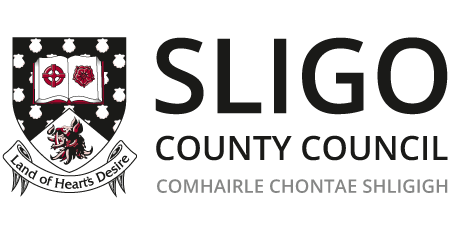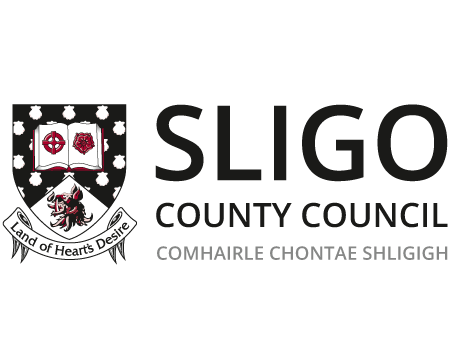Archaeology
Archaeology is the study of the past through the examination of material remains left by human activity. Sligo’s archaeological heritage is rich and varied and includes complex sites such as Carrowmore, Carrowkeel and medieval Sligo to more common ringforts.
Where can I find out about monuments in Sligo?
All known archaeological monuments are identified and listed for protection by the National Monuments Service of the Department of the Environment, Heritage and Local Government, in the Record of Monuments and Places (RMP). The RMP is a statutory inventory of known sites protected under the National Monuments Acts and is a set of 6” maps of County Sligo with an accompanying index which shows all the monuments and their associated zones of archaeological potential. The RMP is available for viewing in the Planning Authority offices and in public libraries. The inventory mostly concentrates on pre 1700 AD sites.
What does inclusion on the Record of Monuments and Places mean?
The Minister for the Environment, Heritage and Local Government is responsible for the protection of our archaeological heritage through the exercise of powers under the National Monuments Acts 1930 to 2004.
When the owner or occupier of a property, or any other person proposes to carry out, or to cause, or to permit the carrying out of any work at or in relation to a Recorded Monument they are required to give notice in writing to the Minister 2 months before commencing that work. This is to allow the National Monuments Service time to advise on how the work may proceed in accordance with the protection of the monument.
For National Monuments in the ownership or guardianship of the Minister or a local authority or which are subject to a preservation order the prior written consent of the Minister is required for any works at or in proximity to the monument.
Under Planning and Development legislation, the Minister for the Environment, Heritage and Local Government is a statutory consultee in relation to potential impacts of any proposed development on the archaeological heritage. This allows the Minister to recommend that archaeological conditions be attached to grants of planning permission, or recommend refusal of planning permission by the planning authority to ensure the protection of the archaeological heritage.
When the owner or occupier of a property, or any other person proposes to carry out, or to cause, or to permit the carrying out of any work at or in relation to a Recorded Monument they are required to give notice in writing to the Minister 2 months before commencing that work. This is to allow the National Monuments Service time to advise on how the work may proceed in accordance with the protection of the monument.
For National Monuments in the ownership or guardianship of the Minister or a local authority or which are subject to a preservation order the prior written consent of the Minister is required for any works at or in proximity to the monument.
Under Planning and Development legislation, the Minister for the Environment, Heritage and Local Government is a statutory consultee in relation to potential impacts of any proposed development on the archaeological heritage. This allows the Minister to recommend that archaeological conditions be attached to grants of planning permission, or recommend refusal of planning permission by the planning authority to ensure the protection of the archaeological heritage.
Who is responsible for protecting the archaeological resource?
The National Monuments Service (NMS), Department of the Environment, Heritage and Local Government plays a key role in the protection of the archaeological heritage.
The National Monuments Service is responsible for:
The National Monuments Service is responsible for:
-
the identification and designation of monuments through the Archaeological Survey of Ireland,
-
assistance in the archaeological care of National Monuments in the ownership or guardianship of the Minister of the Environment, Heritage and Local Government and managed by Office of Public Works,
-
implementation of protective and regulatory controls (including licensing of excavations and making of Ministerial directions and consents) under the National Monuments Acts,
-
the provision of heritage input and advice to planning and other consent authorities in respect of individual planning and other development applications, projects and plans
-
implementing legislative provisions in relation to protection of monuments and sites.
Further information regarding the National Monuments Service can be viewed on www.environ.ie.
The Planning Sections of Sligo Local Authorities also have an archaeological protection function in respect of the Planning and Development Act 2000 and through adopted development plans.
For further information see Archaeology in the Planning Process - English Version - 669 kbs
or Archaeology in the Planning Process - Irish Version - 670 kbs .
The Planning Sections of Sligo Local Authorities also have an archaeological protection function in respect of the Planning and Development Act 2000 and through adopted development plans.
For further information see Archaeology in the Planning Process - English Version - 669 kbs
or Archaeology in the Planning Process - Irish Version - 670 kbs .
Where can I find an Archaeologist?
The National Monuments Service (NMS) compiles a list of archaeologists eligible to apply for excavation licences. This is available from the NMS, Department of the Environment, Heritage and Local Government, Dun Sceine, Harcourt Lane, Dublin 2 (Telephone: 01 8882000 or lo-call 1890 20 20 21).
What do I do if I find an archaeological object?
As there is no designated repository in County Sligo for archaeological objects, all objects discovered should, by law, be deposited with the National Museum. If any archaeological object is found, the National Museum of Ireland should be contacted as soon as possible at Telephone: 01 6777444 and asking for the Duty Officer.
Is there a list of archaeological excavations available for Sligo?
A database containing summary accounts of all the excavations carried out in Ireland – North and South – from 1970 to 2000 is available on www.excavations.ie. It has been compiled from the published Excavations Bulletins from those years, with a similar format. The database gives access to almost 6000 reports and can be browsed or searched using multiple fields, including Year, County, Site Type, Grid Reference, Licence No., Sites and Monuments Record No. and Author.
Where can I get more information on the archaeology of Sligo?
The Record of Monuments and Places is a good starting point for information. The archaeology of South Sligo is described in the Archaeological Inventory of County Sligo – Volume 1 (2005) and is available from bookshops or directly from Wordwell Books. Further volumes of the Archaeological Inventory for County Sligo are currently in preparation.

